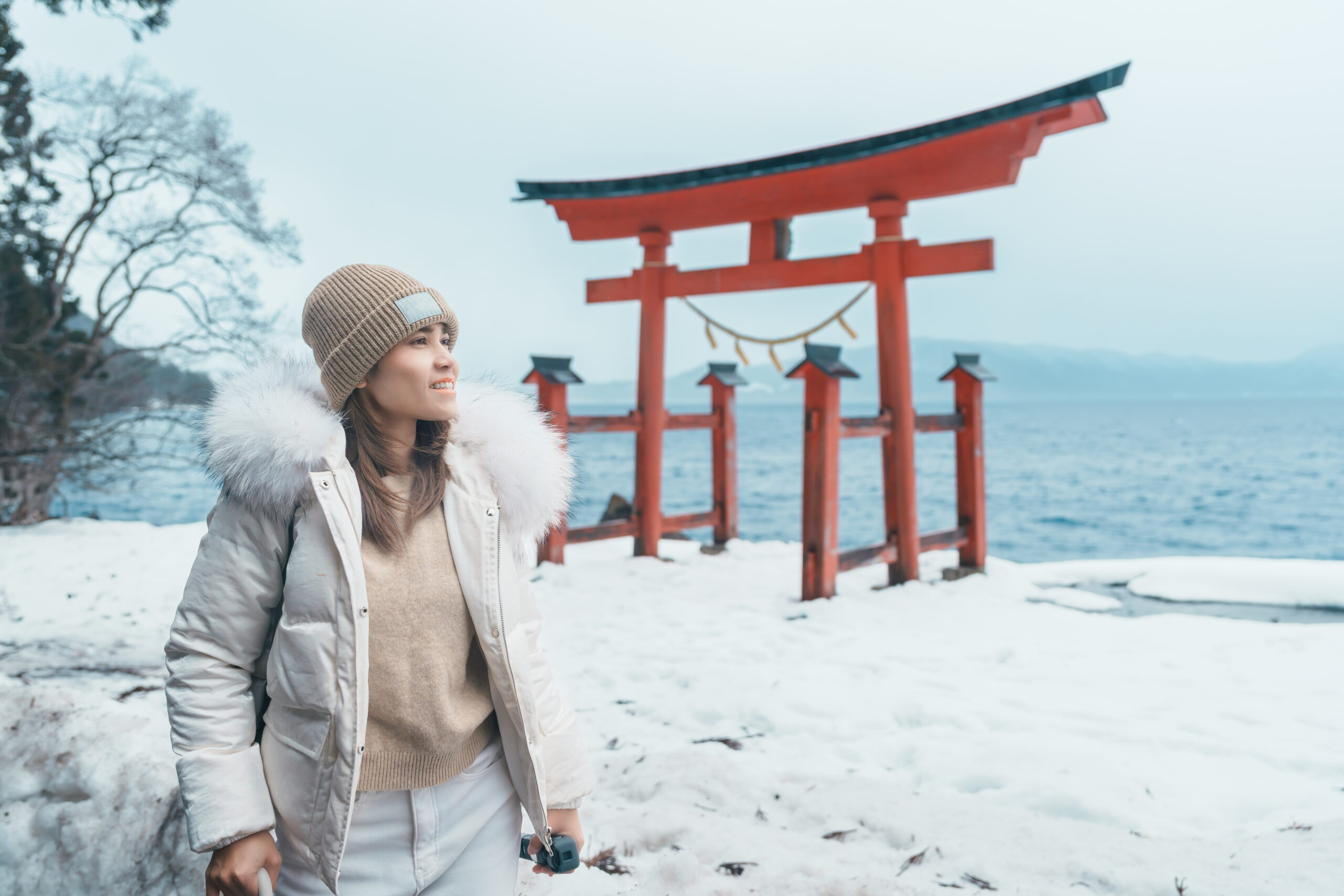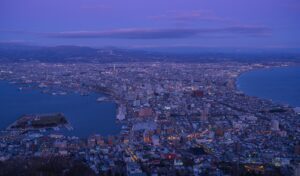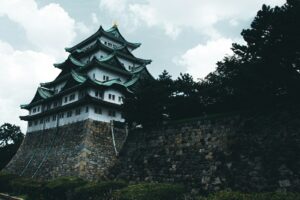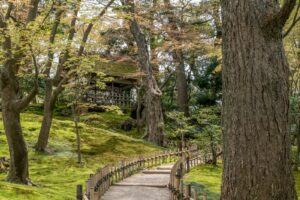As the leaves fall and the temperatures drop, Japan transforms into a winter wonderland, offering a unique blend of breathtaking landscapes, rich cultural experiences, and exhilarating activities. From the serene beauty of snow-covered mountains to the warmth of traditional onsen baths, Japan in winter is a season that beckons travelers to explore its many facets. In this guide, we’ll navigate through the enchanting scenery, thrilling adventures, and cultural treasures that define Japan’s winter experience.
A Journey Through Japan’s Enchanting Winter Landscapes
Japan’s winter landscapes are nothing short of magical. When snow blankets the mountains, valleys, and villages, the country takes on a picturesque charm that captivates visitors. The iconic Mount Fuji, with its snow-capped peak, creates a stunning backdrop for photography or simply soaking in the beauty of the world.
In regions like Hokkaido, the landscape transforms into a vast canvas of white, where powdery snow covers the land, creating perfect conditions for winter sports. The Shiretoko Peninsula, a UNESCO World Heritage site, offers breathtaking views of rugged coastlines and wildlife, framed by the serene white of winter.
The Japanese Alps, particularly around Takayama and Shirakawa-go, showcase traditional thatched-roof farmhouses nestled in snow, providing a glimpse into Japan’s rural heritage. The contrast between the rustic architecture and the serene winter setting is a sight to behold, drawing many to explore these areas.
Cities like Sapporo and Kanazawa also shine in winter, adorned with illuminations and festive decorations. Walking through the snowy streets, visitors can experience the warmth of local hospitality while marveling at the beauty of the season.
Additionally, the quiet beauty of parks and temples blanketed in snow offers a contemplative atmosphere, perfect for those seeking solace or a moment of reflection. From ancient shrines to modern city parks, Japan’s winter landscapes are diverse and captivating.
Finally, winter in Japan invites travelers to engage with nature in a unique way, whether it’s through tranquil hikes or leisurely strolls through snow-laden gardens. The experience of witnessing nature’s artistry during this season is sure to leave a lasting impression on anyone who visits.
The Best Destinations for Winter Activities in Japan
When it comes to winter activities, Japan is a veritable playground for adventurers. Niseko, located in Hokkaido, is renowned for its powder snow and slopes that attract skiers and snowboarders from around the globe. The resort offers a variety of runs catering to all skill levels, making it a must-visit destination for winter sports enthusiasts.
Beyond skiing, Niseko is also a hub for backcountry skiing and snowshoeing, providing an exhilarating way to explore the untouched wilderness. The stunning views of Mount Yotei add to the experience, ensuring that outdoor lovers have plenty to cherish.
In the Japanese Alps, Hakuba Valley is another premier destination, hosting the 1998 Winter Olympics. With numerous ski resorts, visitors can enjoy a wide range of winter sports from skiing to snowboarding and even snowmobiling. The area is well-equipped with facilities and guides, making it ideal for both seasoned athletes and beginners.
For those seeking a more cultural experience, the historic village of Shirakawa-go offers traditional winter activities such as snowshoeing and sledding, along with the charm of its iconic gassho-zukuri farmhouses. The combination of outdoor adventure and cultural immersion is sure to enrich any winter journey.
For families, the Asahikawa area provides attractions like the Asahikawa Winter Festival, where visitors can enjoy ice sculptures and winter-themed activities. This adds a festive touch to the winter experience, blending adventure with cultural festivities.
Finally, the snow-covered temples of Kyoto invite travelers to explore the city’s rich history and culture while enjoying winter walks among the serene landscapes. The harmony of nature and culture makes Japan a diverse destination for winter activities.
Experiencing the Charm of Japanese Onsen in Winter
No winter visit to Japan would be complete without experiencing its renowned onsens, or hot springs. The contrast of soaking in a steaming hot bath while surrounded by snow is a uniquely Japanese experience that provides both relaxation and rejuvenation.
Regions like Hakone and Beppu are famous for their onsens, offering various types of hot springs, from outdoor baths with stunning mountain views to luxurious indoor facilities. Many onsens are enriched with minerals, providing not only warmth but also health benefits.
Visiting an onsen is also a cultural experience, where travelers can immerse themselves in the traditions of purifying oneself before entering the baths. The etiquette surrounding onsens, from washing before entry to embracing the communal aspect of bathing, adds to the charm and authenticity of the experience.
For a truly magical experience, consider staying in a ryokan—traditional Japanese inns that often feature their own onsens. Guests can enjoy kaiseki meals prepared with seasonal ingredients, further enhancing the cultural immersion during their stay.
In addition to relaxation, onsens often provide beautiful views of the surrounding landscapes, making the experience even more enchanting. Imagine soaking in a hot spring while snowflakes gently fall around you, creating a serene and peaceful atmosphere.
Finally, many onsens offer outdoor baths, allowing visitors to connect with nature while enveloped in warmth. The experience of a winter onsen retreat is a highlight not to be missed on any winter journey in Japan.
Savoring Seasonal Delights: Winter Cuisine in Japan
Winter in Japan is a time for culinary delights, with seasonal dishes that are both nourishing and comforting. One of the most famous winter foods is nabe, a hot pot dish filled with vegetables, meats, and seafood, cooked in a communal pot. It’s a delicious way to warm up during the cold months and is often enjoyed with family and friends.
Another popular winter treat is oden, a comforting stew of various ingredients such as boiled eggs, radish, and fish cakes simmered in dashi broth. Oden stalls can be found at street markets, where locals and visitors alike gather to indulge in this beloved dish.
Meanwhile, in Hokkaido, travelers can savor the region’s specialty, soup curry, which combines the warmth of curry with fresh, seasonal vegetables. The dish is a perfect representation of winter cuisine, offering both flavor and nourishment, ideal for the chilly weather.
Seafood enthusiasts will also find winter to be the best time to enjoy crab, particularly the king crab and snow crab that are abundant during this season. Restaurants often showcase these delicacies, providing a memorable dining experience that highlights the flavors of winter.
Additionally, sweet treats like yakiimo (roasted sweet potatoes) and mochi (rice cakes) become popular during winter celebrations. Street vendors often sell these warm snacks, offering a delightful way to indulge while exploring the festive atmosphere.
Finally, winter cuisine in Japan is deeply rooted in tradition and locality, with each region offering its unique specialties. As you explore Japan’s winter wonderland, be sure to savor these seasonal delights that embody the warmth and hospitality of Japanese culture.
Iconic Snow Festivals: Celebrating Winter Culture
Japan’s winter season is marked by a series of vibrant snow festivals that celebrate the culture and artistry of the region. One of the most famous is the Sapporo Snow Festival, held annually in Hokkaido. This festival attracts millions of visitors who come to marvel at the intricate snow and ice sculptures that adorn Odori Park, some reaching impressive heights and intricate designs.
During the festival, visitors can enjoy a variety of activities, including snow slides, ice skating, and even snowboarding. The lively atmosphere is complemented by food stalls offering local delicacies, creating a festive ambiance that captures the spirit of winter.
Another notable festival is the Otaru Snow Light Path Festival, where the city of Otaru illuminates its streets with soft candlelight and snow sculptures. The enchanting glow creates a romantic atmosphere, drawing couples and families alike to participate in this winter wonderland.
In the heart of the Japanese Alps, the Nozawa Onsen Snow Festival showcases traditional Japanese culture with a vibrant parade and the burning of a massive wooden effigy. This festival offers a unique glimpse into local customs and traditions, making it a worthwhile experience for cultural enthusiasts.
Additionally, the Yokote Kamakura Festival features small igloo-like structures called kamakura, where visitors can enjoy drinks and snacks served inside. The setting is magical, with the glowing lanterns creating a winter wonderland atmosphere that enchants all who visit.
Finally, these snow festivals not only highlight the beauty of winter but also foster community spirit and a sense of togetherness. Participating in these celebrations provides travelers with a deeper appreciation for Japan’s winter culture and traditions.
Skiing Adventures: Japan’s Top Slopes to Explore
Japan is renowned for its world-class skiing, attracting enthusiasts from around the globe to its pristine slopes. The northern island of Hokkaido is home to some of the best ski resorts, with Niseko leading the way. Known for its incredible powder snow and diverse terrain, Niseko offers a variety of runs that cater to skiers and snowboarders of all skill levels.
Beyond Niseko, the nearby Rusutsu Resort features a mix of terrain and fewer crowds, making it an ideal choice for those seeking a more tranquil skiing experience. The resort’s beautiful landscapes and family-friendly facilities make it a popular destination for families.
In the Japanese Alps, Hakuba Valley boasts multiple ski resorts that collectively hosted the 1998 Winter Olympics. With over 200 trails and stunning mountain views, Hakuba is a haven for winter sports enthusiasts, offering everything from groomed runs to backcountry skiing.
For those looking to immerse themselves in a more traditional atmosphere, the resort of Shiga Kogen offers a unique experience with its extensive ski area. The region is not only known for its slopes but also for its beautiful landscapes and rich wildlife, making it a perfect destination for nature lovers.
Additionally, the ski resorts in Toyama Prefecture, including Tateyama and Kurobe, provide breathtaking views of the Northern Alps and a chance to experience Japan’s unique snow culture. These areas offer various winter activities, such as snowshoeing and snowmobiling, alongside skiing.
Finally, Japan’s ski resorts are known for their exceptional facilities and hospitality. Many resorts offer ski schools, rentals, and après-ski activities, ensuring that visitors have everything they need for a memorable skiing adventure in Japan.
Winter Wildlife: Unique Creatures of Japan’s Cold Months
Japan’s winter landscape is not only a haven for outdoor enthusiasts but also a unique habitat for various wildlife species that thrive in the cold months. One of the most iconic winter sights is the Japanese macaque, or snow monkey, which can often be seen bathing in the hot springs of Jigokudani Monkey Park. These playful primates provide a delightful spectacle for visitors who come to witness their unique behavior in the snow.
In Hokkaido, the red-crowned crane, a symbol of longevity and good fortune in Japanese culture, migrates to the region during winter. The cranes can be observed in the wetlands of Kushiro, where conservation efforts have been made to protect their habitat and ensure their survival. Spotting these majestic birds in their natural environment is a memorable experience for wildlife enthusiasts.
The winter months also bring the opportunity to see various sea creatures along Japan’s coastlines. The warm currents of the Ogasawara Islands attract humpback whales, which can be spotted during their migration. Tour operators offer whale-watching tours, providing an unforgettable experience for those keen on marine life.
Moreover, in the snowy forests of northern Japan, elusive wildlife such as red foxes and sika deer can be seen navigating through the winter landscape. These animals are well-adapted to the harsh conditions, showcasing the resilience of wildlife in Japan’s cold months.
Birdwatchers can also delight in the sight of migratory birds flocking to Japan during winter. Various species, including the whooper swan, can be observed in wetlands and lakes, drawing birdwatchers from near and far to witness their beauty.
Finally, the winter months provide an opportunity to connect with nature and witness the unique adaptations of Japan’s wildlife as they thrive in the cold. Exploring the natural beauty and wildlife of Japan during winter is a rewarding experience that should not be missed.
Traditional Lodgings: Staying in a Ryokan This Winter
For an authentic Japanese experience during winter, consider staying in a ryokan, a traditional inn that offers a glimpse into Japan’s hospitality and culture. Ryokans often feature tatami-matted rooms, sliding shoji doors, and futon bedding, providing a serene and culturally immersive atmosphere for guests.
Many ryokans are located in scenic areas, offering breathtaking views of snow-covered landscapes. Staying in such a setting allows travelers to fully appreciate Japan’s winter beauty while enjoying the warmth of traditional hospitality.
One of the highlights of staying in a ryokan is the kaiseki meal, a multi-course dinner that showcases seasonal ingredients and meticulous presentation. Guests can savor the flavors of winter while being treated to the culinary artistry that Japan is known for.
Additionally, many ryokans feature their own private onsen baths, allowing guests to relax in hot springs without leaving the comfort of the inn. Soaking in the warm waters while watching the snow fall outside creates a magical experience that embodies the essence of winter in Japan.
The hospitality of ryokan staff is renowned, with attentive service that enhances the overall experience. From the moment you arrive, you are treated with warmth and respect, making your stay truly memorable.
Finally, staying in a ryokan provides an opportunity to engage with Japanese customs and traditions, from wearing yukatas to participating in tea ceremonies. This cultural immersion enriches your winter journey and leaves you with lasting memories of Japan’s hospitality.
Navigating Japan’s Winter Transportation: A Guide
Navigating Japan during the winter months is made easier with the country’s efficient and extensive transportation system. The Shinkansen, or bullet train, is a convenient option for traveling between major cities, allowing visitors to experience the stunning winter landscapes while enjoying a comfortable ride.
When traveling to ski resorts in Hokkaido or the Japanese Alps, the Shinkansen offers direct routes that make accessing popular destinations seamless. Booking tickets in advance is recommended, especially during peak travel seasons, to secure your spot and enjoy a stress-free journey.
For those exploring rural areas or smaller towns, local trains and buses are readily available. Japan’s public transportation system is known for its punctuality and cleanliness, ensuring that travelers can navigate the winter terrain with ease.
Additionally, rental cars are a viable option for those who wish to explore off-the-beaten-path destinations. Many car rental companies offer winter tires to accommodate snowy conditions, providing travelers with the freedom to explore the stunning landscapes at their own pace.
When traveling in snowy conditions, it is important to check weather forecasts and road conditions. Some areas may experience heavy snowfall, leading to road closures, so staying informed will help ensure a safe journey.
Finally, utilizing apps and online resources for navigation can enhance your travel experience. Many apps provide real-time information on train schedules, local attractions, and even weather updates, making it easier to plan your winter adventures across Japan.
Essential Winter Gear for Your Japanese Adventure
When planning a winter trip to Japan, packing the right gear is essential to ensure comfort and enjoyment during your travels. Layering is key, as temperatures can vary significantly between cities and regions. Start with moisture-wicking base layers to keep you dry, followed by insulating layers for warmth, and a waterproof outer layer to protect against rain and snow.
When selecting winter footwear, choose insulated and waterproof boots with good grip for navigating snow and ice. Comfortable, warm socks are also important to keep your feet cozy while exploring the winter landscapes.
A good-quality winter coat is essential for staying warm during outdoor activities. Opt for a coat with insulation and a hood to protect against the cold and wind. Accessories like scarves, gloves, and beanies are also crucial for keeping warmth in and preventing frostbite.
For those planning on skiing or snowboarding, investing in quality ski gear is wise. This includes waterproof pants, insulated jackets, and thermal layers to keep you warm on the slopes. Don’t forget items like goggles and helmets for safety on the mountain.
If you plan to visit onsens, pack a swimsuit and a quick-drying towel, as many onsens require these items. Some ryokans may provide yukatas, but having your own comfortable attire can enhance the experience.
Finally, consider packing a portable charger and a camera to capture the stunning winter scenery. With Japan’s picturesque landscapes and vibrant festivals, you’ll want to document your adventures in this winter wonderland.
Capturing the Magic: Photography Tips for Winter Scenes
Japan’s winter landscapes offer countless opportunities for photographers to capture stunning images. To make the most of your photography adventure, consider the time of day for optimal lighting. Early mornings and late afternoons provide soft, golden light, creating a magical atmosphere for winter scenes.
When photographing snow-covered landscapes, pay attention to the contrast between the white snow and other colors in the scene. Using a polarizing filter can help reduce glare while enhancing the colors of the sky and surrounding elements.
Don’t forget to include people in your shots. Capturing locals, snow monkeys, or fellow travelers can add a sense of scale and warmth to your winter images. Consider candid shots that showcase the joy and wonder of winter activities.
Experiment with different angles and perspectives to add depth to your compositions. Low angles can emphasize the grandeur of snow-covered mountains, while high angles can provide an overview of bustling festivals or serene temples surrounded by snow.
When photographing festivals, be mindful of the crowd. Arriving early or staying late can help you find less crowded spots for your shots. Also, don’t hesitate to capture the details, such as illuminated ice sculptures or intricate decorations, to tell a complete story of the event.
Finally, carrying extra batteries and memory cards is essential during winter, as cold temperatures can drain battery life quickly. With these tips in mind, you’ll be well-equipped to capture the enchanting beauty of Japan’s winter wonderland.
Preparing for Your Trip: Essential Winter Travel Tips
As you prepare for your winter journey to Japan, there are several essential tips to keep in mind. First and foremost, check travel advisories and local guidelines, especially concerning snow conditions or potential delays in transportation. Understanding local customs and manners will also enhance your experience.
Booking accommodations in advance is crucial during peak winter travel seasons. Popular ski resorts and ryokans can fill up quickly, so securing your stay ahead of time will ensure you have a comfortable base for your adventures.
Purchasing a Japan Rail Pass can save you money if you plan to travel extensively by train. The pass provides unlimited travel on certain trains, making it a cost-effective choice for exploring various regions. Be sure to validate your pass before travel to avoid any issues.
Familiarizing yourself with Japanese etiquette, such as bowing, removing shoes when entering homes and ryokans, and the proper way to use onsens, will enhance your interactions with locals and deepen your cultural immersion.
Consider learning a few basic Japanese phrases to facilitate communication with locals. While many Japanese people speak English, especially in tourist areas, making an effort to speak the language can go a long way in connecting with others.
Lastly, be adaptable and open to changes in your plans. Winter weather can be unpredictable, with heavy snowfall potentially affecting travel schedules. Embrace the spirit of adventure and be ready to explore alternative activities or destinations that may arise.
Winter in Japan is a season full of wonder, offering travelers a rich tapestry of experiences that blend nature, culture, and adventure. From the breathtaking landscapes to the warmth of traditional onsen, Japan’s winter charm is undeniable. By exploring its many facets, you will not only create unforgettable memories but also gain a deeper appreciation for the beauty and resilience of this remarkable country. Whether you’re a seasoned traveler or a first-time visitor, Japan’s winter wonderland awaits to captivate and inspire you.








